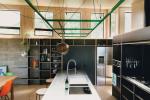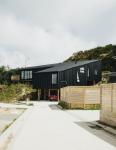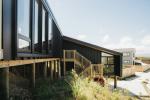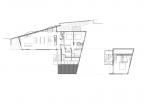Vorstermans Architects: Hillside House, Wellington
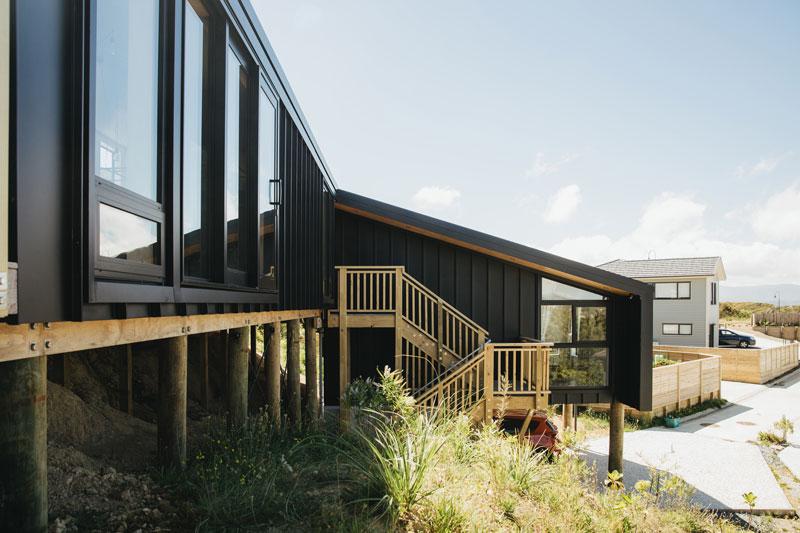
Building a stylish and affordable home on a steep, south-facing site was a big challenge for Vorstermans Architects. But it’s one they met so well that the ‘Hillside House’ recently won a New Zealand Institute of Architects (NZIA) Wellington Architecture Award.
As the NZIA jury noted: “Wellington architects are often presented with difficult site conditions and weather considerations.
“The architects of the Hillside House responded to these challenges, including a steep, small, south-facing section and a road hard up against the northern boundary, artfully.”
The jury added: “The architects have delivered a charming, 135 square metre family home that is cleverly planned and thoughtfully detailed – an excellent example of affordable housing done well.” When Vorstermans Architects were called in, the clients had already been presented with a design by a group housing company but didn’t like the idea of the house being dug into the hill, creating dark and cold rooms. The excavation and retaining necessary for this design would have added up to $70,000 to the project. In light of this, they wanted to minimise any earthworks.
The site was in a recent subdivision and in a high wind zone. It has views to Wellington Harbour facing southwest and rises to the road steeply to the northwest. Therefore it was important that the design helped to maximise sun coming into the house while making the most of the view. With a section size of 403sq m, site coverage was also a factor, meaning a maximum footprint of 140sq m.
Within these confines, the clients wanted an affordable home with three bedrooms plus an office. Vorstermans Architects’ concept was to raise the house in order to maintain views of Wellington Harbour, while minimising excavation. This is in stark contrast to most spec home companies operating in the area.
To achieve this, the main structure is anchored to the hill with a small retaining wall and supported along its front edge by poles, which help the design to float above the land. The idea is that once the garden underneath develops, this will be enhanced by the posts appearing like tree trunks thrusting out from the ground level flora.
Having a carport underneath rather than building an expensive garage allows the two-storey part of the home to hover above the land, and finishing the drive in gravel gives the house a soft edge and less of an urban subdivision feel.
Stepping the house down the hill enables it to have a single roof plane, angled up to the north. With its roofing and cladding in ColorCote® ZinaCore® G10 black, the home has a strong, textured form. The tray roofing and cladding system gives the dwelling a texture that is different to the surrounding landscape to emphasise the human craftsmanship among the smooth hills and vegetation.
Particular attention was paid to wall-roof junctions and windows lining up with metal pan widths, which set a strict grid.
The only colours on the exterior are two entry doors in bright orange and bright yellow. All other materials have a natural finish – ply soffits and timber stair balustrades.
The home is laid out as two wedge arrangements meeting either side of an entrance lobby. The first wedge contains the public areas: living, dining and kitchen with ceiling, walls and floors wrapped in plywood that has exposed screw fixings in a neat set-out. The plywood, with a black HPL finish, is designed to be an integral part of the architecture. The second wedge houses the private areas: bedrooms and amenities split over several stepped levels. The private areas are predominantly white, in plasterboard and tiles. The home steps over the site, fitting under the one roof which rises to the north, meaning the clerestory windows capture plentiful sun that spills deep into the kitchen and dining areas during winter and summer. The lounge is pushed as high and as far west as possible to maximise views down to Wellington and over the harbour.
Internally, the home mixes natural materials: blonded plywood and exposed masonry blocks with painted plasterboard walls. The open plan living area is the dwelling’s main feature with stunning harbour views and a delightfully unique lime green, steel-framed kitchen and LED lights that provide the ambience for casual living and entertaining.
Vorstermans Architects says, “The dwelling, we believe, creates an architectural statement in this landscape that is becoming more powerful as more group house company dwellings grow around the property. This house, while modest in size, we would describe as a hidden gem: it will be a surprise to most that reside in the area as unique and different, thereby giving the local environment a richness which may be unexpected.”
Throughout the house, the architects have added surprise design features such as the clever use of an angled wall between the two levels and bathrooms, and maximised the use of space and storage.
Vorstermans Architects adds, “Our client was bold to approach us initially as they were bored by their initial plans, which were devoid of any design or excitement. “It is with their openness to design ideas and a quest for something unique and different that we have been able to deliver this architectural solution that will continue to enhance their quality of life both by providing a warm and comfortable environment to live and entertain in, and also by continuing to surprise them with their unique solution with such amazing light, atmosphere and awesome views.”

